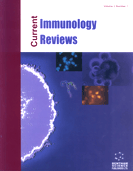Abstract
A unique feature of secretory cells is the proliferation of the endoplasmic reticulum (ER) and Golgi network. The high demand imposed by protein synthesis and folding in secretory cells constitutes an endogenous source of stress due to the accumulation of toxic misfolded intermediaries. Adaptation to ER stress is mediated by the activation of a complex signal transduction pathway known as the unfolded protein response (UPR). Evidence from genetic manipulation of the UPR supports the notion that components of the pathway are essential to sustain the function of secretory cells. Expression of the UPR transcriptional factor X-Box binding protein-1 (XBP-1) is essential for the proper function of plasma B cells and exocrine cells of pancreas and salivary glands. Active XBP-1 is generated by the direct processing of its mRNA by the ER stress sensor IRE1α through the formation of a complex signaling platform at the ER membrane, here termed as UPRosome. XBP-1 controls the expression of genes involved in almost every aspect of the secretory pathway including folding, protein quality control, ER translocation, glycosylation, and remodeling of ER and Golgi structure. In this article we discuss recent advances in understanding the mechanisms through which XBP-1 controls secretory cell function and the possible involvement of this pathway in disease conditions related to irreversible ER damage. Current therapeutic strategies to modulate ER function are also discussed.
 12
12

